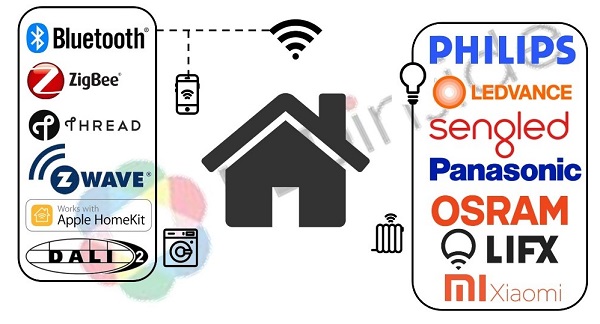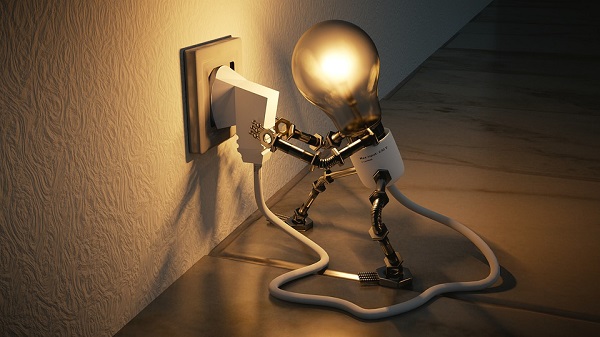It’s not a coincidence that multinational lighting conglomerates like Philips Lighting and LEDVANCE have lately been undergoing transformations, including product mix adjustment, more investments in smart lighting, cutting jobs and quitting production related to traditional lighting.
Behind those acts are two major motives—to smarten up and achieve energy efficiency. So, they are walking the walk with the governments towards the goal to phase out conventional lighting containing mercury, and, more importantly, they are creating a future where everything connects. That starts with smart lighting.
Lighting becomes smart both at home and at commercial/industrial locations; however, they are not smartening up at the same pace. Let’s be honest, for a big part of the consumers, smart home and smart lighting are more like buzzwords flying over their heads. It needs more factors, from outside or within the end-customers, extended smart cities policies or an urge for high speed data transmission via light, for example, to drive the penetration growth of smart lighting in the residential sector.
On the other hand, smart lighting for commercial and industrial use are growing fast not just because it is convenient and easier to manage, but also because it is to some extent necessary on the way to a more digitalized era. For that necessity, government subsidies and energy services exist to help enterprises with the adoption of connected lighting.
LEDinside would like to bring up some big names in three main sectors as key roles to facilitate connected lighting and smart cities.
 |
|
(Image: LEDinside) |
The Lighting Sector: Philips, LEDVANCE, LIFX, Acuity Brands, Lite-On
It’s just a month ago that Philips Lighting reported its smart and professional segments brought significant revenue boost and it is going to adopt a new name anticipated to reflect smart lighting and services. Its high-profile products and services, namely the Hue family and the CityTouch smart street lighting management system, are widely used in the smart home lighting market and 1,000 city-scale projects respectively.
LEDVANCE is also one leading company investing heavily in smart lighting. It develops a comprehensive portfolio, in which 50% of the products are Zigbee-based and the other 50% Homekit-enabled. The company acknowledges the difficulty to market smart lighting products to end-consumers and attempts to raise their awareness of smart lighting. It will continue to develop diverse smart lighting products for different wireless technology users. ‘Easy to install’ and ‘work without a hub’ are main selling points of its products, such as SYLVANIA Smart+ A19 Full Color LED Bulb.
Being chosen as a partner of Apple’s technology is not easy. Apart from LEDVANCE, LIFX is another lighting provider whose bulbs are included in the list of home accessories that can be controlled with Apple’s Homekit app. This 5-year-old company has successfully launched twelve LED Wi-Fi lights that work with Amazon Alexa and Google Home to over 80 countries.
Industrial lighting provider Acuity Brands offers both indoor and outdoor lighting products and controlling systems. It also creates Atrius, an IoT service platform providing smart solutions using light and sensors to improve business managements. Also, with a smart street lighting portfolio, Acuity Brands have partnered with energy service companies such as Johnson Control and participated in a few Smart City projects.
Taiwan-based Lite-On in August 2017 joined a digital cities program run by the Global Project Center of Stanford University. It is committed to create urban infrastructure that will enable smart street lighting, wireless communication, and intelligent surveillance. As a result, in addition to street lights, Lite-On is also developing security cameras, surveillance solutions and communication modules that can operate seamlessly with one another.
The Networks & Controls: IoT Communication Techs, Silver Spring Networks, Digital Lumens
Connectivity is certainly a big part in connected lighting and the Internet of Things (IoT). There exists a myriad of communication technologies to make devices talk to each other. Depending on different factors, such as range, security, power consumption, locations, and data transfer requirements, network companies/ alliances develop technologies with various standards.
For example, Z-wave, a low power RF communication technology, is primarily for home automation. It features low latency and is able to deliver a small amount of data with data rates of 100kbps at most. As it operates in the sub-1GHz band, it perfectly dodges interference from other technologies in the frequency range of 2.4GHz such as Zigbee and Bluetooth, which allows users to automate the surroundings with a combination of a few technologies rather than just with one.
Same as Z-wave, Thread, a IPv6-based wireless technology, is also a good option for home automation. Its inventor, the Thread Group alliance, of which the members encompass Osram, NXP, Qualcomm, Johnson Controls and other big brands, collaborated with the Zigbee Alliance to launch in December 2017 the Dotdot, an open and interoperable IoT network technology.
[Read LEDinside: Development of Smart LED Lighting Market and Trends in Communication Technology in 2017-2020 to understand more wireless communication technologies.]
Silver Spring Networks, recently acquired by American tech company Itron, develops IoT software and equipment enabling outdoor wireless mesh networks for smart cities. Its Starfish Platform-as-a-Service (PaaS), an IoT networking solution, provides public-cloud access to tens of millions of devices in private cloud infrastructure across North America, Europe and parts of Asia.
Digital Lumens, now owned by Osram, started out manufacturing hardware for smart industrial/ commercial lighting. It later also began to invent software, such as SiteWorx and LightRules, able to integrate with its own lighting fixtures to digitalize control and monitoring of light, sensors, and security cameras.
 |
|
(Image: LEDinside) |
The Energy Service Organizers: Johnson Controls, Siemens
Last, but definitely not the least is energy service implementation and management for smart building and smart city, which is organized by energy service companies, or ESCOs. By tailoring energy solutions for clients in both private and public sectors, ESCOs aim to meet requirements to upgrade infrastructure, reduce power consumption, and save energy cost. After designing those energy efficient measures, they would outsource the implementation—normally lighting retrofits and installation of smart controlling and/or metering systems—to participating companies.
[Read On the Way to Smart Cities: Explore ESCO’s Role with Johnson Controls to get more details about ESCOs.]
The rapid growth of population in urban areas and the climate change has driven the world’s need for ESCOs. Well-known ESCOs include Johnson Controls and Honeywell in North America; Blue Star Limited and Development Environergy Services Limited (DESL) in India; China Energy Technology (CET) in China; and Siemens in Europe. They utilize different business models but aim at one goal—to complete energy optimization of buildings or facilities. Those optimizations are financed by energy savings generated during the process.
Several studies have pointed out that about 70% of the world population will live in urban environments by 2050. By that time, the energy consumption in cities is very likely to experience a significant hike. Governments and enterprises are trying to address issues caused by energy overconsumption and potential chaos by high population density; therefore, they deliver energy solutions, including smart lighting, to improve resilience and sustainability of the environment.
That explains why smart lighting is more-employed in the industrial and commercial sectors rather than the residential sector, but lighting in the residential sector would gradually turn intelligent like the other two with the assistance of companies from these three sectors.
Related readings:
LEDinside: Smart Lighting, Niche Lighting and Lighting in Emerging Countries are Top Three Driving Forces for Global LED Lighting Market Trend
LEDinside: Global Industrial Lighting Market Scale Will Reach USD 5.687 Billion in 2022
[Editor’s Note: The article only covers major companies that represent the industries they belong to due to limited article length.]





 CN
TW
EN
CN
TW
EN









